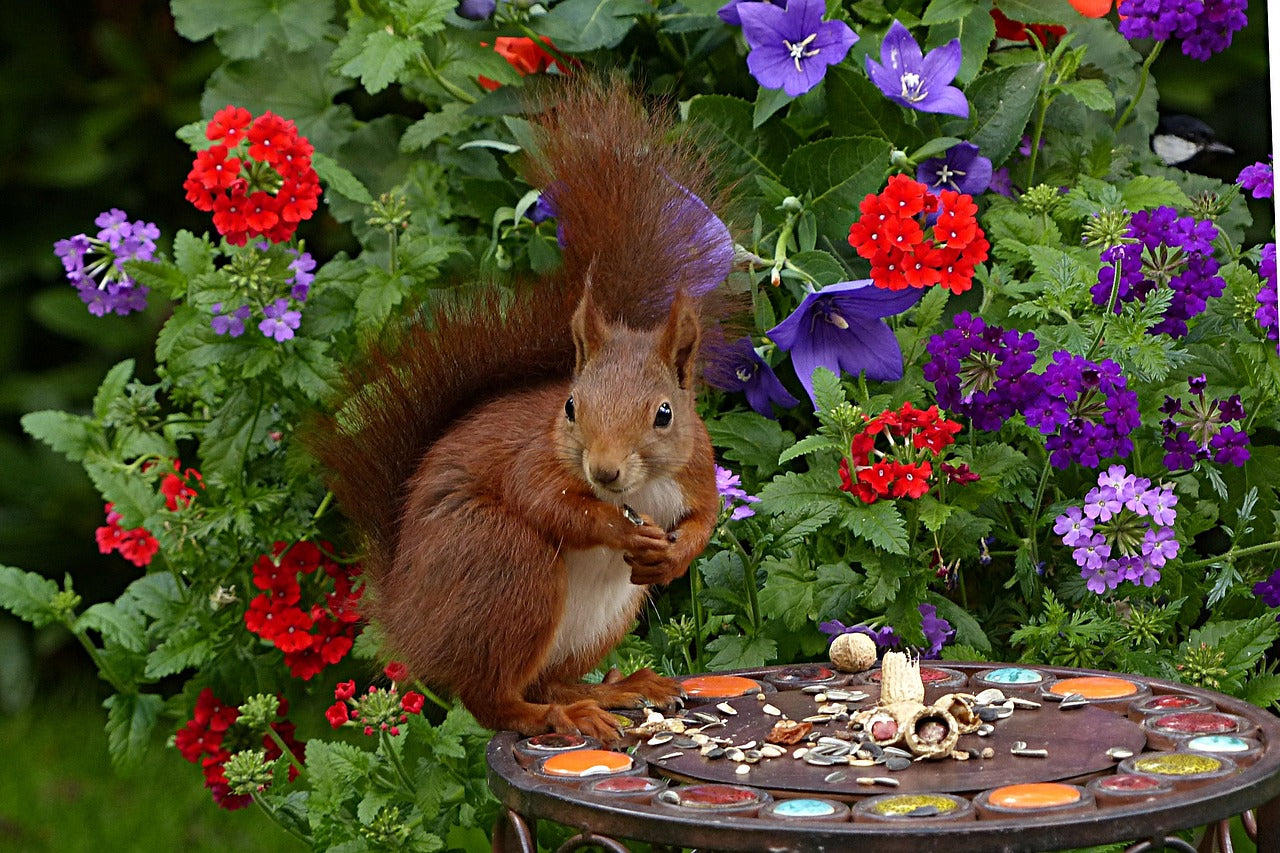Introduction: Unearthing the Curious Habits of Our Furry Neighbors
Squirrels, those ubiquitous and seemingly innocuous residents of our parks and backyards, often captivate us with their acrobatic leaps and playful chases. Yet, behind this charming facade lies a world of complex behaviors that can sometimes leave gardeners puzzled and frustrated. One such behavior is their penchant for digging in flower pots, an act that may seem arbitrary or even destructive to the untrained eye. Delving into the mysteries of nature, we uncover the underlying reasons why squirrels engage in this curious activity, exploring their instincts, survival strategies, and the subtle interplay between human habitats and wildlife.

The Quest for Food: Uncovering Hidden Treasures
At the heart of many squirrelly excavations lies a simple motivation: the search for sustenance. Flower pots, especially those filled with nutrient-rich soil, can inadvertently serve as a smorgasbord for these opportunistic foragers. Squirrels are known to dig in search of buried seeds, nuts, or even insects that they sense beneath the soil’s surface. This instinctual behavior harkens back to their natural habitat where caching food for lean times is a crucial survival strategy. In urban environments, where natural food sources may be scarce, potted plants can become irresistible targets, their confined spaces concentrating potential food sources and making them more accessible.
Creating a Comfortable Abode: Nesting Instincts at Play
Beyond the quest for food, squirrels also dig in flower pots to create nesting sites. Springtime, in particular, sees a surge in such activities as female squirrels prepare for the birth and rearing of their young. Potted plants offer both shelter and seclusion, with the soil providing an easy medium to excavate and shape into cozy dens. The presence of foliage offers additional cover, camouflaging the nest from predators and the elements. It’s a testament to their adaptability that squirrels can turn human-made structures into suitable homes, a skill that has undoubtedly contributed to their thriving populations in urban landscapes.
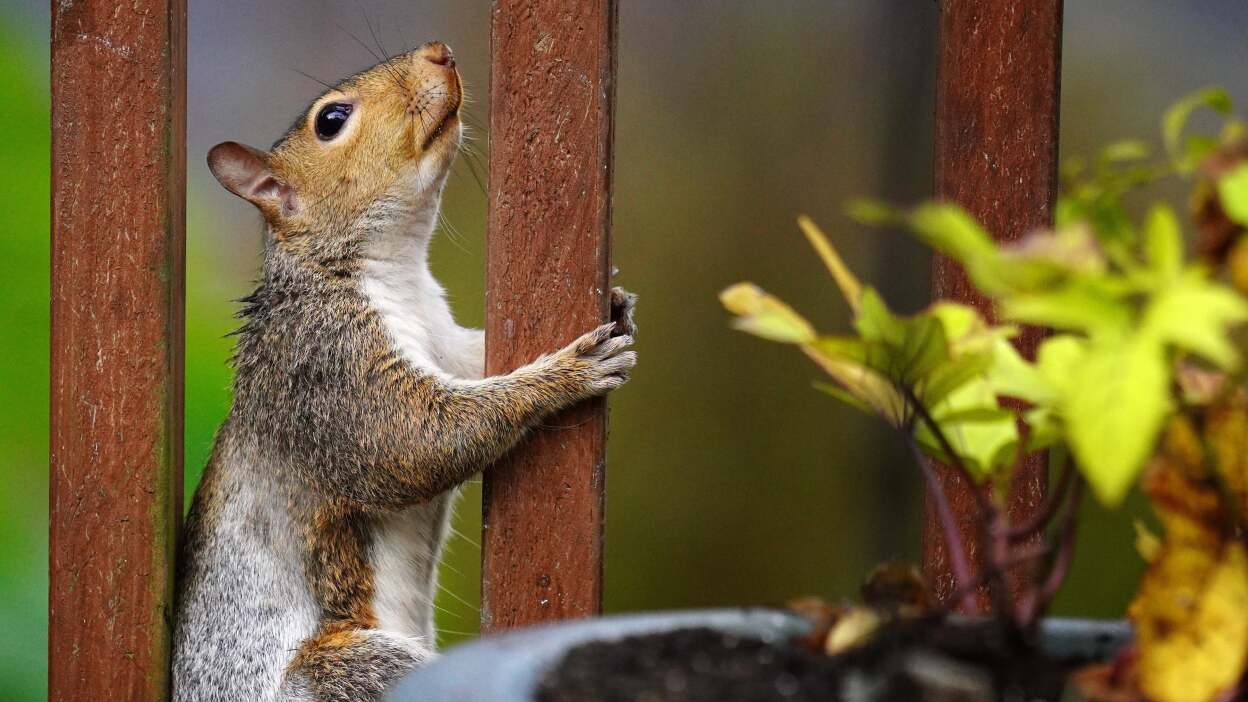
Territorial Marking and Communication: A Language in Dirt
Squirrels, like many animals, rely on scent marking to communicate vital information to their kin. By digging and leaving their scent in flower pots, they establish territorial boundaries, warning off competitors and potential threats. This olfactory signaling serves multiple purposes, including mate attraction and kin recognition. To the casual observer, these small disturbances may seem insignificant, but they form part of a broader social network, a silent language etched into the earth by tiny claws. Understanding this aspect of squirrel behavior reminds us of the intricate social dynamics at play, even among creatures we often dismiss as simple-minded.
A Game of Exploration and Play: The Joy of Discovery
Not all squirrel digging is driven by necessity. Sometimes, these energetic creatures engage in playful excavation, driven by curiosity and a natural instinct to explore their surroundings. Young squirrels, in particular, are prone to such antics, using digging as a form of play that helps hone their foraging and survival skills. Potted plants, with their loose soil and contained environment, present an inviting playground where squirrels can indulge their inquisitive nature without the immediate threat of predators. This seemingly whimsical behavior underscores the importance of play in the life of animals, mirroring similar tendencies observed in other species, including humans.
Mitigating Conflict: Strategies for Coexistence
While the reasons behind squirrel digging in flower pots are fascinating, they can pose challenges for avid gardeners and plant enthusiasts. Damage to delicate plants, uprooted seedlings, and disturbed soil are common grievances. However, peaceful coexistence is possible with a few strategic adjustments. Providing alternative food sources, such as squirrel feeders stocked with nuts and seeds, can divert their attention away from potted plants. Installing physical barriers, like wire mesh around the base of pots or using squirrel-resistant containers, can deter digging without harming the animals. Lastly, embracing native plants that squirrels are less likely to disturb can foster a garden ecosystem that supports both flora and fauna alike.
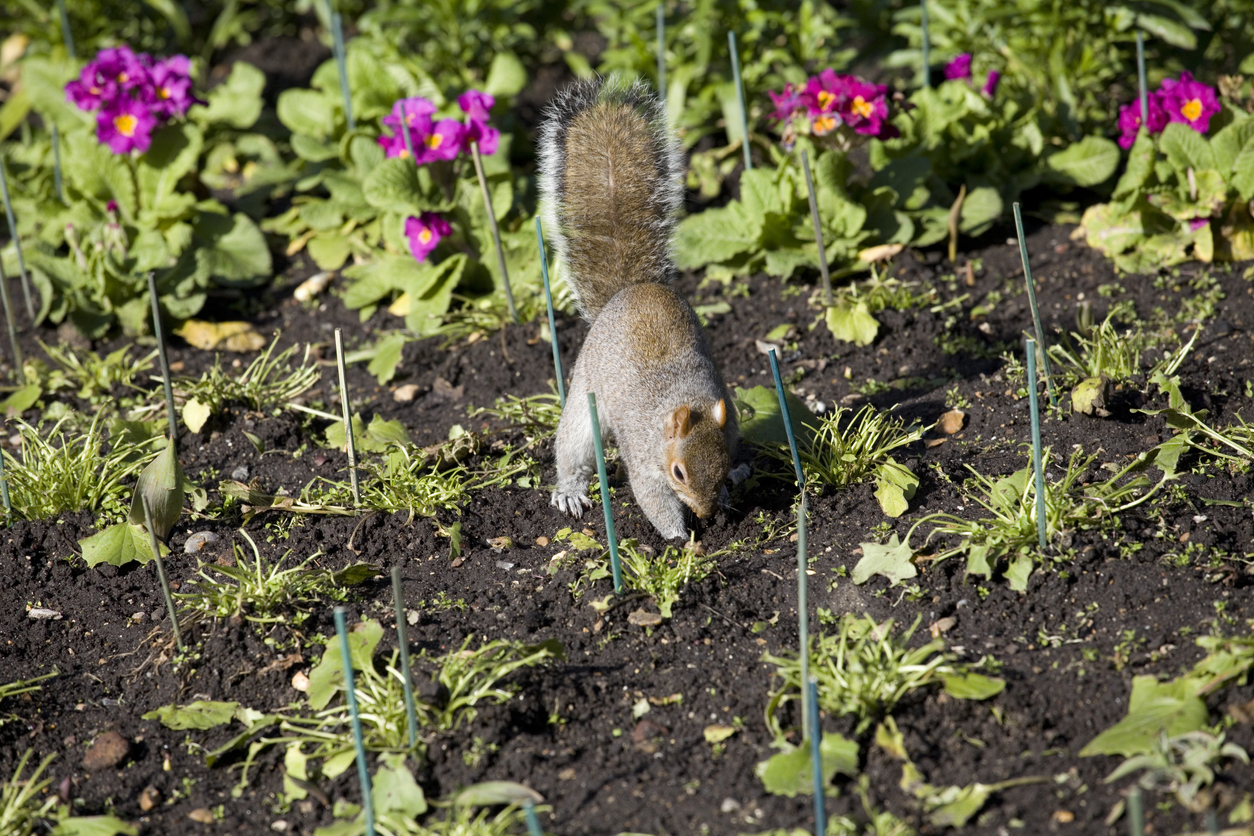
The Art of Adaptation: Squirrels and Urban Living
As human populations expand, natural habitats shrink, compelling wildlife like squirrels to adapt to urban environments. Remarkably, these furry creatures have not just survived but thrived amidst the concrete jungles, turning parks, gardens, and even balconies into their homes. Flower pots, in this context, become more than just targets for digging; they represent islands of greenery in an otherwise artificial landscape. Squirrels’ ability to exploit these resources demonstrates their remarkable adaptability, a crucial survival skill in our ever-changing world. Understanding their behaviors in urban settings encourages us to create more sustainable and squirrel-friendly environments, fostering a harmonious coexistence between humans and wildlife.
Decoding the Nut Cache: Squirrel Intelligence and Planning
Beyond their playful antics and territorial markings, squirrels exhibit impressive cognitive abilities, particularly in hoarding food for winter. Their digging activities often involve burying nuts and seeds, creating a dispersed cache of food sources. What’s fascinating is their ability to remember the location of these caches, sometimes months later. Scientists have discovered that squirrels use spatial memory and even landmarks to retrieve their hidden treasures. This intricate caching system not only ensures their survival during lean times but also highlights their advanced problem-solving skills and long-term planning, challenging traditional notions about animal intelligence.
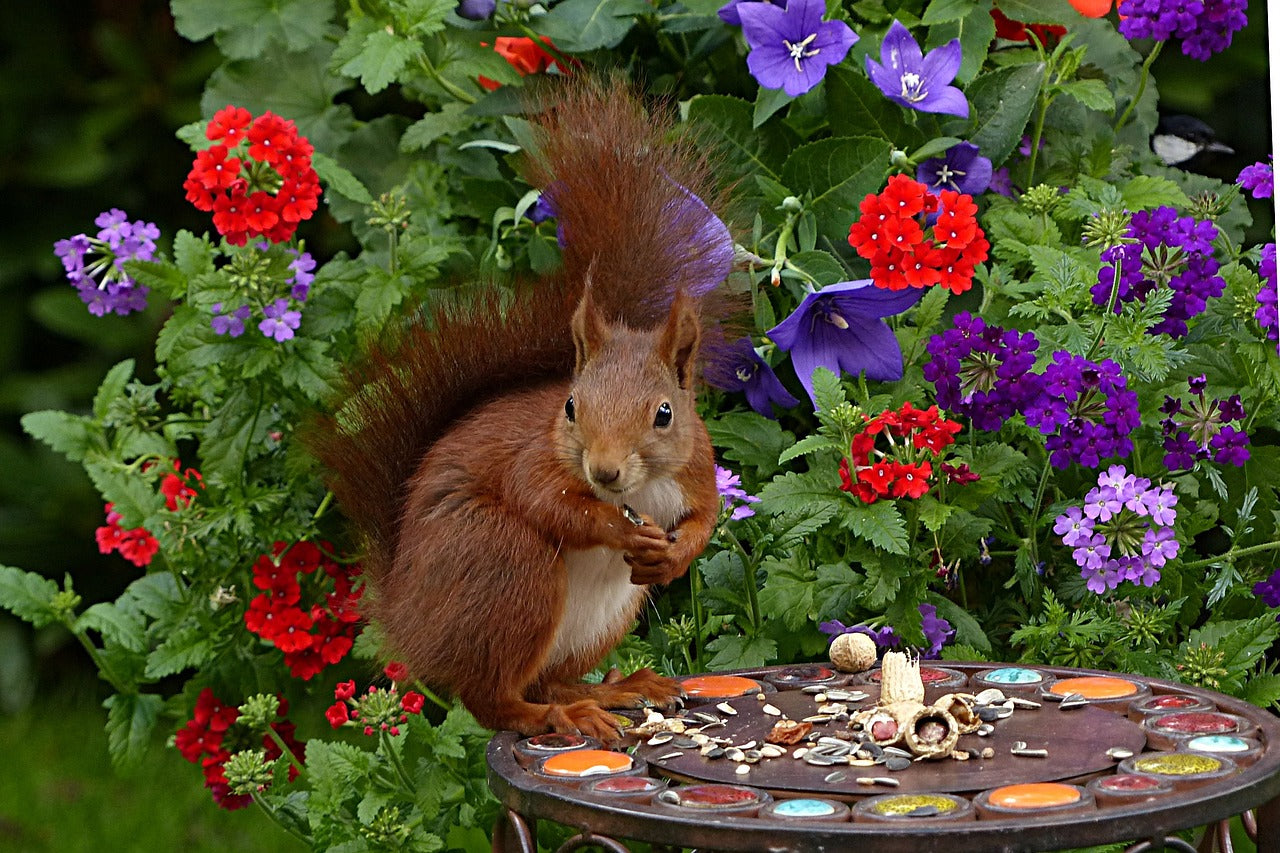
The Ecological Impact: Squirrels as Keystone Species
Squirrels’ digging habits extend beyond personal needs, influencing the broader ecosystem. By burying seeds and forgetting some, they inadvertently contribute to forest regeneration. This “scatter-hoarding” behavior promotes tree diversity and can lead to the dispersal of plant species, making squirrels key players in maintaining ecological balance. Furthermore, their excavations can aerate the soil, improving its structure and facilitating nutrient cycling. Recognizing squirrels’ role in ecosystem services underscores their value beyond being charming backyard visitors, emphasizing the interconnectedness of life in nature.
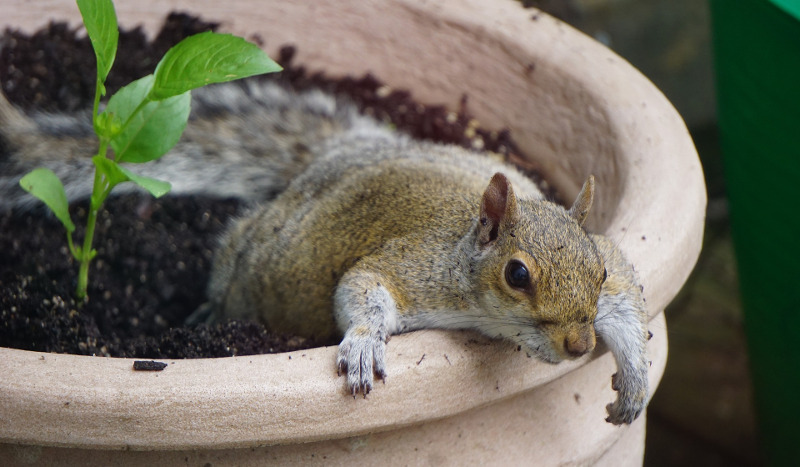
Conclusion: Embracing Nature’s Complexity in Our Backyards
The enigmatic behavior of squirrels digging in flower pots serves as a microcosm of the intricate balance between wildlife and human habitats. Far from being arbitrary acts, these digs reveal a rich tapestry of instincts, needs, and social interactions that underpin squirrel ecology. As we unravel these mysteries, we’re reminded of our role in shaping the urban landscape and the responsibility we have to foster environments that accommodate the needs of all its inhabitants. By understanding and adapting to the behaviors of our furry neighbors, we take a step closer to true harmony with nature, enriching our own lives in the process.
